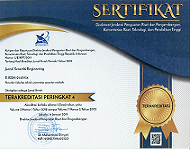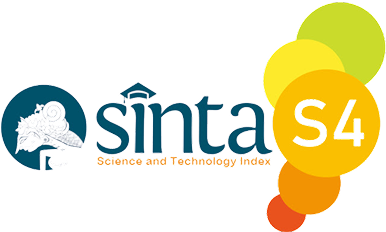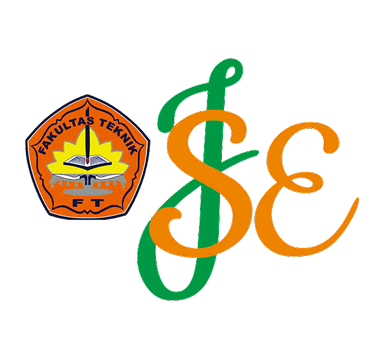Efisiensi Produksi melalui Otomatisasi Sederhana Pada Industri Kerajinan Skala Rumah
Keywords:
Production efficiency, simple automation, craft industry, SMEs, technological innovationAbstract
This study aims to analyze the implementation of simple automation as a strategy to enhance production efficiency in small-scale home craft industries. In an increasingly competitive creative economy, small business owners are required to improve productivity without investing heavily in advanced technology. This research employs a descriptive qualitative approach using the Systematic Literature Review (SLR) method to identify relevant forms of simple automation, including semi-mechanical tools, time-based work systems, and ergonomic production layouts. The results indicate that simple automation can increase work efficiency, reduce human error rates, and lower production costs by approximately 25-40% without compromising product quality. Furthermore, the adoption of simple automated systems positively impacts production stability and competitiveness in household craft enterprises. This study contributes to practical insights for micro and small entrepreneurs as well as policymakers in developing sustainable efficiency strategies through affordable and context-appropriate technological innovation
References
[1] M. Syahbudi and S. E. I. Ma, Ekonomi Kreatif Indonesia: Strategi Daya Saing UMKM Industri Kreatif Menuju Go Global (Sebuah Riset Dengan Model Pentahelix). Merdeka Kreasi Group, 2021.
[2] L. M. Furkan and N. Odake, “Best practice of innovation among the Indonesian craft industry cluster: Lesson learnt from Indonesia,” in Proceedings of PICMET’14 Conference: Portland International Center for Management of Engineering and Technology; Infrastructure and Service Integration, IEEE, 2014, pp. 1252–1265.
[3] S. Ikhbar, N. Nelly, M. Maksalmina, C. Amni, A. Arsyad, and A. A. Fansuri, “Strategi Pengelolaan Operasional untuk Meningkatkan Keuntungan dan Mengurangi Pengeluaran dalam Industri Daur Ulang Plastik,” J. Serambi Eng., vol. 10, no. 1, 2025.
[4] P. Mauliza et al., “Kendala Pemenuhan Suplai dan Permintaan Energi Terbarukan Biomassa Indonesia,” J. Serambi Eng., vol. 8, no. 3, 2023.
[5] F. Hanum et al., “Strategi Ekspansi Usaha UMKM dengan Pendekatan Metoda Hybrid SWOT Analisis dan AHP,” J. Serambi Eng., vol. VIII, no. 1, pp. 4991–4999, 2023, [Online]. Available: https://ojs.serambimekkah.ac.id/index.php/jse/article/view/5675
[6] M. Marlina, T. M. H. A. H. Almuqaramah, C. R. Rusmina, R. Rahmi, and M. Zidane, “Analisis Profitabilitas dan Efisiensi Operasional pada Industri Perikanan Skala Kecil di Indonesia,” J. Serambi Eng., vol. 10, no. 3, 2025.
[7] M. Marlina, S. Sufitrayati, S. Amri, N. Syamsuddin, R. Radhiana, and R. M. Akbar, “Inovasi Operasional untuk Efisiensi Biaya dan Peningkatan Profit di Industri Pengolahan Limbah Plastik,” J. Serambi Eng., vol. 10, no. 1, 2025.
[8] C. Rusmina, M. Mawardi, M. Bakri, S. Susanti, R. Radhiana, and C. A. Surayya, “Meningkatkan Daya Saing UMKM melalui Penerapan Just-in-Time dan Teknologi Sederhana,” J. Serambi Eng., vol. 10, no. 1, 2025.
[9] V. Manfredi Latilla, F. Frattini, A. Messeni Petruzzelli, and M. Berner, “Knowledge management and knowledge transfer in arts and crafts organizations: evidence from an exploratory multiple case-study analysis,” J. Knowl. Manag., vol. 23, no. 7, pp. 1335–1354, 2019.
[10] Y. S. Rao, Production and operations management. Academic Guru Publishing House, 2023.
[11] Juwita et al., “Peluang Ekspansi Energi Terbarukan Biomassa dengan Analisis SWOT,” J. Serambi Eng., vol. 8, no. 1, pp. 4947–4956, 2023.
[12] U. Ulfia, R. Rahmi, Z. Yusuf, R. Radhiana, M. Mukhdasir, and A. Humaira, “Strategi Pemilihan Bahan Baku Daur Ulang untuk Meningkatkan Profitabilitas di Industri Pengolahan Limbah Plastik,” J. Serambi Eng., vol. 10, no. 1, 2025.
[13] R. Radhiana, M. Mukhdasir, J. Surya, N. Syamsuddin, M. Maryam, and A. Syafitri, “Pengaruh Sistem Produksi Lean terhadap Pengurangan Biaya Produksi dan Peningkatan Profitabilitas di Industri Pengolahan Limbah Plastik,” J. Serambi Eng., vol. 10, no. 1, 2025.
[14] T. Wanniarachchi, K. Dissanayake, and C. Downs, “Improving sustainability and encouraging innovation in traditional craft sectors: the case of the Sri Lankan handloom industry,” Res. J. Text. Appar., vol. 24, no. 2, pp. 111–130, 2020.
[15] S. R. Fletcher et al., “Adaptive automation assembly: Identifying system requirements for technical efficiency and worker satisfaction,” Comput. Ind. Eng., vol. 139, p. 105772, 2020.
[16] N. Viswanadham and Y. Narahari, Performance modeling of automated systems. PHI Learning Pvt. Ltd., 2015.
[17] J.-C. Lu and T. Yang, “Implementing lean standard work to solve a low work-in-process buffer problem in a highly automated manufacturing environment,” Int. J. Prod. Res., vol. 53, no. 8, pp. 2285–2305, 2015.
[18] R. Eglash, L. Robert, A. Bennett, K. P. Robinson, M. Lachney, and W. Babbitt, “Automation for the artisanal economy: enhancing the economic and environmental sustainability of crafting professions with human–machine collaboration,” Ai Soc., vol. 35, no. 3, pp. 595–609, 2020.
[19] J. A. D. Sabon, F. C. Ompusunggu, F. Hasibuan, and A. R. Hakim, Pembuatan Alat Pemotong Kelapa Muda Berbasis Teknologi Progresif untuk Meningkatkan Produktivitas. LovRinz Publishing, 2024.
[20] B. Dermeik and N. Travitzky, “Laminated object manufacturing of ceramic‐based materials,” Adv. Eng. Mater., vol. 22, no. 9, p. 2000256, 2020.
[21] D. Biksono, Teknik pengeringan dasar. Deepublish, 2022.
[22] A. Jumiono et al., Buku Ajar Teknologi Pertanian. PT. Green Pustaka Indonesia, 2025.
[23] M. Shafi, Zoya, M. A. Fauzi, and Y. Yang, “Factors influencing small handicraft enterprises to adopt technological innovation: insights from Pakistani handicraft enterprises,” Asian J. Technol. Innov., vol. 33, no. 2, pp. 509–543, 2025.
[24] J. Á. Gumiel, J. Mabe, F. Burguera, J. Jiménez, and J. Barruetabeña, “Next-generation pedal: integration of sensors in a braking pedal for a full brake-by-wire system,” Sensors, vol. 23, no. 14, p. 6345, 2023.
[25] M. E. Booth and G. Philip, “Technology, competencies, and competitiveness: The case for reconfigurable and flexible strategies,” J. Bus. Res., vol. 41, no. 1, pp. 29–40, 1998.
[26] W. Połeć and D. Murawska, “The social constraints on the preservation and sustainable development of traditional crafts in a developed society,” Sustainability, vol. 14, no. 1, p. 120, 2021.
[27] R. Nengsih, M. Mukhdasir, K. Khairuna, and M. Ahyar, “Inovasi dan Diversifikasi Produk Gerabah sebagai Katalisator Pertumbuhan Laba pada UMKM Sektor Kerajinan,” J. Serambi Eng., vol. 10, no. 3, 2025.
[28] L. Buechley and H. Perner-Wilson, “Crafting technology: Reimagining the processes, materials, and cultures of electronics,” ACM Trans. Comput. Interact., vol. 19, no. 3, pp. 1–21, 2012.
[29] C. Rusmina, Z. Zainuddin, J. Juwita, M. Marlina, and A. Jelita, “Risiko Investasi pada Inovasi Teknologi Ramah Lingkungan dalam Pengolahan Limbah Plastik,” J. Serambi Eng., vol. 10, no. 2, 2025.
[30] S. J. Spiegel, “Microfinance services, poverty and artisanal mineworkers in Africa: In search of measures for empowering vulnerable groups,” J. Int. Dev., vol. 24, no. 4, pp. 485–517, 2012.
[31] S. Edgar, “Artisan social enterprises in Zambia: Women leveraging purpose to scale impact,” Soc. Enterp. J., vol. 20, no. 2, pp. 140–158, 2024.
[32] G. Goel and M. Rishi, “Promoting entrepreneurship to alleviate poverty in India: An overview of government schemes, private‐sector programs, and initiatives in the citizens’ sector,” Thunderbird Int. Bus. Rev., vol. 54, no. 1, pp. 45–57, 2012.
[33] H. Steedman and K. Wagner, “A second look at productivity, machinery and skills in Britain and Germany,” Natl. Inst. Econ. Rev., vol. 122, pp. 84–108, 1987.
[34] A. Miqueo, M. Torralba, and J. A. Yagüe-Fabra, “Lean manual assembly 4.0: A systematic review,” Appl. Sci., vol. 10, no. 23, p. 8555, 2020.
[35] A. E. Gray, A. Seidmann, and K. E. Stecke, “A synthesis of decision models for tool management in automated manufacturing,” Manage. Sci., vol. 39, no. 5, pp. 549–567, 1993.
[36] M. Maryam, R. Nengsih, T. Makmur, S. Susanti, A. Arsyad, and A. R. Rahmi, “Meningkatkan Profitabilitas UMKM Pengrajin Gerabah dengan Efisiensi Keuangan dan Optimalisasi Produksi,” J. Serambi Eng., vol. 10, no. 1, 2025.
[37] M. Shafi, L. Yin, Y. Yuan, and Zoya, “Revival of the traditional handicraft enterprising community in Pakistan,” J. Enterprising Communities People Places Glob. Econ., vol. 15, no. 4, pp. 477–507, 2021.
[38] L.-P. Dana, V. Ramadani, R. Palalic, and A. Salamzadeh, Artisan and handicraft entrepreneurs. Springer, 2022.
[39] O. A. Abisuga-Oyekunle and I. R. Fillis, “The role of handicraft micro-enterprises as a catalyst for youth employment,” Creat. Ind. J., vol. 10, no. 1, pp. 59–74, 2017.
Downloads
Published
Issue
Section
License
Copyright (c) 2025 Ijal Fahmi, Cut Rusmina, Nelly , Maryam (Author); Reza Mustafa (Translator)

This work is licensed under a Creative Commons Attribution 4.0 International License.












